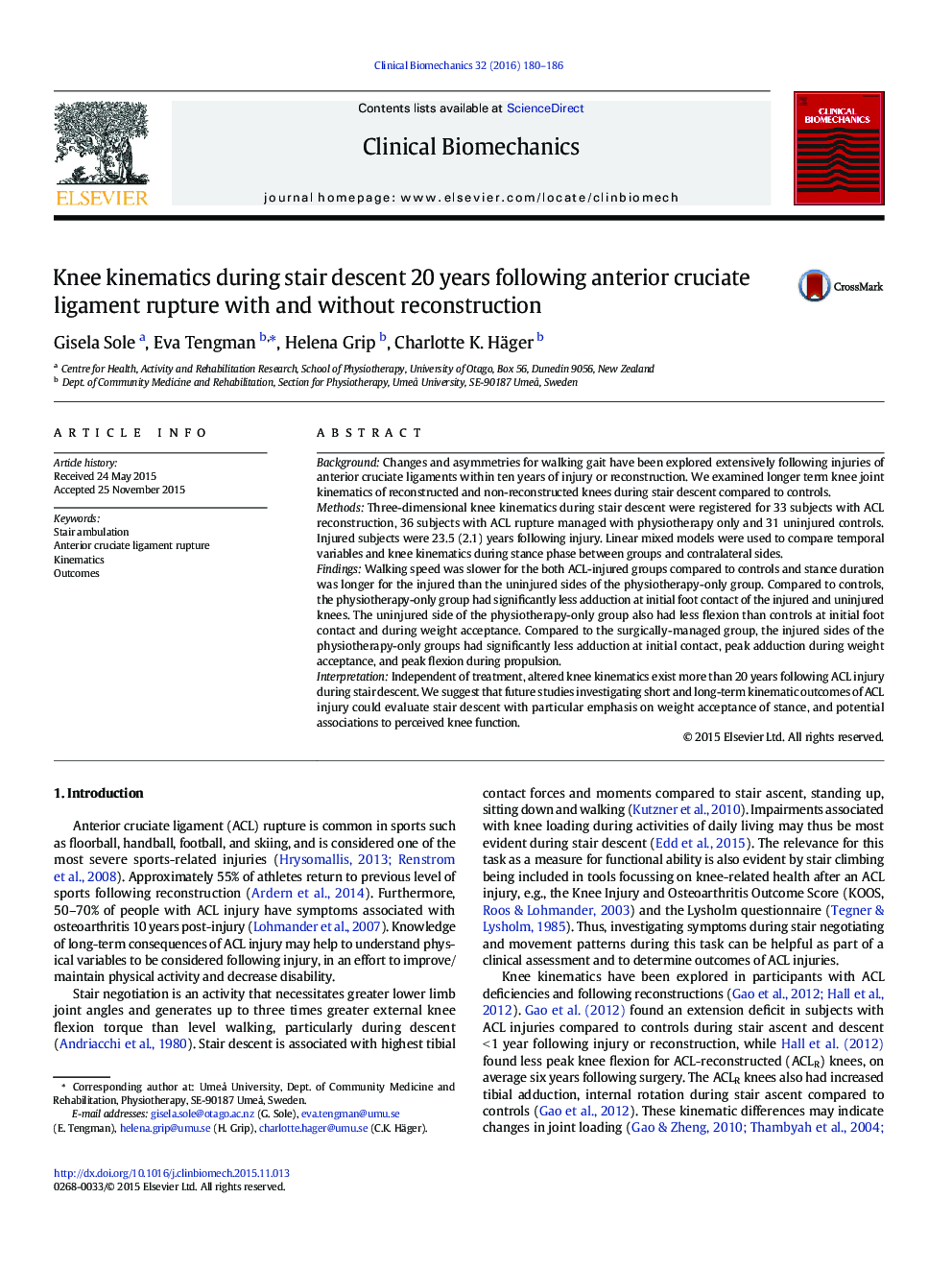| کد مقاله | کد نشریه | سال انتشار | مقاله انگلیسی | نسخه تمام متن |
|---|---|---|---|---|
| 6204636 | 1603746 | 2016 | 7 صفحه PDF | دانلود رایگان |
- Groups with ACL injuries descended stairs slower than controls.
- Physiotherapy group had less adduction at initial contact than reconstructed knees and controls.
- Physiotherapy group had less maximum flexion and adduction than reconstructed knees
- Knee adduction and flexion during descent may be used to monitor ACL injury outcomes
BackgroundChanges and asymmetries for walking gait have been explored extensively following injuries of anterior cruciate ligaments within ten years of injury or reconstruction. We examined longer term knee joint kinematics of reconstructed and non-reconstructed knees during stair descent compared to controls.MethodsThree-dimensional knee kinematics during stair descent were registered for 33 subjects with ACL reconstruction, 36 subjects with ACL rupture managed with physiotherapy only and 31 uninjured controls. Injured subjects were 23.5 (2.1) years following injury. Linear mixed models were used to compare temporal variables and knee kinematics during stance phase between groups and contralateral sides.FindingsWalking speed was slower for the both ACL-injured groups compared to controls and stance duration was longer for the injured than the uninjured sides of the physiotherapy-only group. Compared to controls, the physiotherapy-only group had significantly less adduction at initial foot contact of the injured and uninjured knees. The uninjured side of the physiotherapy-only group also had less flexion than controls at initial foot contact and during weight acceptance. Compared to the surgically-managed group, the injured sides of the physiotherapy-only groups had significantly less adduction at initial contact, peak adduction during weight acceptance, and peak flexion during propulsion.InterpretationIndependent of treatment, altered knee kinematics exist more than 20Â years following ACL injury during stair descent. We suggest that future studies investigating short and long-term kinematic outcomes of ACL injury could evaluate stair descent with particular emphasis on weight acceptance of stance, and potential associations to perceived knee function.
Journal: Clinical Biomechanics - Volume 32, February 2016, Pages 180-186
